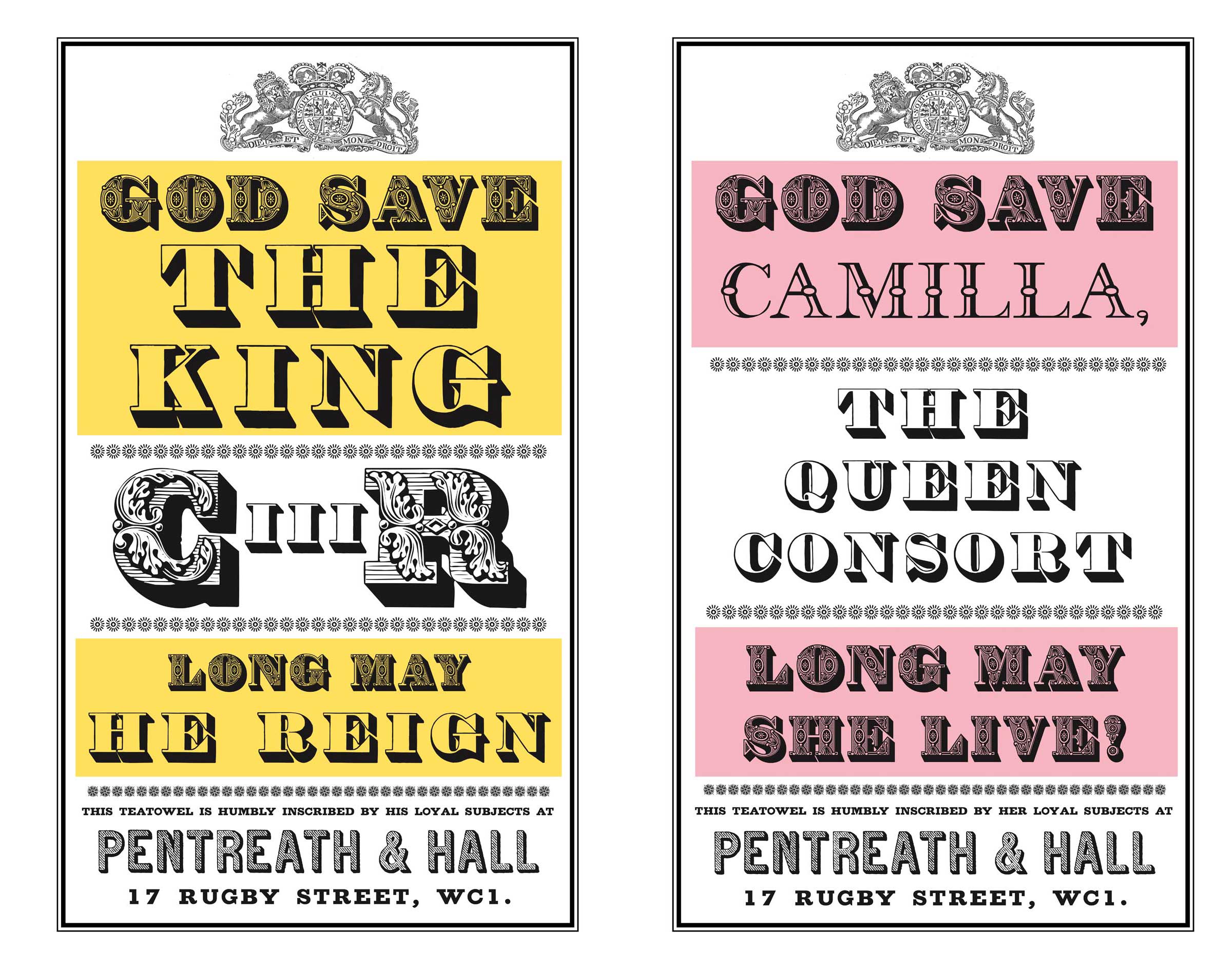Coronation memorabilia: Future heirlooms, or future charity shop tat?
Love it or loathe it, royal memorabilia is big business. Huon Mallalieu takes a look at the commemorative souvenirs of the past and considers if they ever really make an investment for the future.


In May 2022, the then Duchess of Cornwall spent £1.50 at a charity shop to acquire a mug celebrating her mother-in-law’s 1977 Silver Jubilee. A quick internet search brings up several similar mugs by various makers, differing slightly in shape and detail. The now Queen may or may not have hooked a bargain, as the current price range runs from 99p up to £60. As she apparently has a collection of such royal souvenirs, her purchase will probably join some of the 20 to 25 lines of official merchandise authorised for her own comparatively low-key wedding in 2005.
There were about 1,600 for The King’s first marriage, 120 for the present Duke and Duchess of Edinburgh’s wedding, 700 for the Silver Jubilee and 800 for the Golden.

Last year’s Platinum Jubilee brought a deluge of commemoratives from the elegant to the utterly naff, of which the most sought after may turn out to be any survivors of the junked Chinese order for 10,000 pieces of crockery inscribed ‘Platinum Jubbly’.
This was by no means unprecedented; ‘Jubilee Royal’, the 1977 exhibition organised by the Commemorative Collectors’ Society at Goldsmiths’ Hall, London, to celebrate the Silver Jubilee of the then Queen, included many tasteful mugs, plates, figurines, tea towels, biscuit tins, toys, pencils, key rings and, of course, a variety of silver items, but also a number of much less likely tokens of the nation’s regard for its sovereign. The London manufacturer Sunarama, for instance, presented a range of fetching ladies’ socks, garters, bras and pants, all boasting the crowned Jubilee Appeal logo.

From classical times, rulers have issued medals to commemorate their triumphs and claims and, later, such things as glasses engraved with Jacobite symbols, bowls with anti-slave trade sentiments or electioneering slogans were often used to make political points.
The beginnings of a mass market in royal commemoratives had a similar political stimulus, as an expression of support for the restoration of Charles II in 1660. Medals were issued, but, more generally, pottery and pewter dishes were made with crude portraits or the Royal Arms, together with oak leaves and acorns, or such inscriptions as ‘Vivat Rex Carolus Secundus Beati Pacifici’ (‘Long Live King Charles II of Blessed Peace’).
"This coronation will produce both beautifully designed gems and real horrors, which is just as it should be"
The popularity of these encouraged more of the same for the restored King’s coronation and marriage. During the unsettled decades following Charles’s death in 1685, politics rather than commemoration came to the fore and medals were produced for William III and the Jacobites. Factories such as the Vauxhall Pottery in London happily supplied all parties with mugs and jugs decorated as required with busts of Charles, James, Anne, George I or George II with his Queen Caroline. However, after half a century, passions abated and George III’s coronation in 1761 prompted straightforwardly celebratory portraits on ceramics.
Exquisite houses, the beauty of Nature, and how to get the most from your life, straight to your inbox.

Other than the late Queen (and James III for Jacobites), the only English or British monarchs to celebrate golden jubilees have been Henry III, Edward III, George III and Victoria, of which the first two occasions left little trace, although Edward III marked his by granting ‘Pardons and Graces to the commonality of his realm’.
Although he, too, pardoned deserters, George III’s jubilee year, 1809–10, was a different matter and the lineaments of the modern industry are very evident.

George III's birthday, June 4, was regularly marked in London, but, in 1810, it was celebrated with processions, bonfires, dinners and loyal toasts throughout the country, as the seven-year-old poet Marjory Fleming noted in Edinburgh:
Two days ago was the King’s Birthday And to his health we sang a lay Poor man his health is very bad And he is often very mad He was a very comely lad…
A favourite inscription on commemoratives was ‘A King Revered. A Queen Beloved’, which may imply some anxiety about the impending Regency of the Prince of Wales. The Prince was widely loathed and his coronation as George IV 11 years later was commemorated rather differently, as the shenanigans of his desire to divorce Queen Caroline invited satire rather than celebration. However, his visit to Edinburgh, so brilliantly compèred by Sir Walter Scott, launched the tartan tide of souvenirs that has not stopped flooding to this day.

William IV and Queen Adelaide were remembered more with quiet affection. The marriage of Queen Victoria and Prince Albert in 1840 was a comparatively small-scale affair, reflecting the bride’s wishes, and it provoked relatively little in the way of commemorative ceramics, all suitably seemly. Engravings after paintings of the event were probably the most popular souvenirs.
However, although the wedding of the Prince of Wales and Princess Alexandra of Denmark in 1863 was intended to be a private ceremony at Windsor in respect for the Queen’s wish ‘not to be gawped at’ in her grief following Albert’s death 15 months earlier, it was the first such occasion to be photographed and it prompted an outpouring of souvenirs in many forms.

As well as the traditional plates, cups and mugs, there were Parianware busts and jugs, woven silk bookmarks, printed handkerchiefs, medallions, prints and special editions of periodicals and popular magazines from The Illustrated London News to The British Workman. Victoria’s jubilees were recognised in glass and ceramics.
Twentieth-century coronations and marriages have been eagerly commemorated. The two that tend to excite collectors most are the two coronations that never actually happened: that of Edward VII in June 1902, which had to be cancelled two days beforehand due to his appendicitis, and that of Edward VIII, overtaken by his abdication.

The first cancellation almost killed the great César Ritz, who had spent months working on a banquet. When the ceremony finally took place six weeks later, it was notable as the first to be celebrated on lapel badges, after the example of the 1896 American Presidential election.
Ceramics designed by Eric Ravilious for Edward VIII were later modified to celebrate George VI and Elizabeth II in their turn. The list of 1953 commemoratives is almost endless, from sets of sterling-silver dishes set with crown coins to pencils by way of biscuit tins, orb-shaped money boxes, lurid green and pink plastic salt and pepper sets, jigsaws, plates, mugs and glasses. Again, there were souvenir issues from newspapers and magazines — Country Life's characteristically handsome contribution is currently listed from £4.50 to £45 on eBay, depending on condition — as well as service programmes and tickets.

The 2,000 chairs and 5,700 stools used by the congregation in Westminster Abbey were very well made by a number of British companies, including B. North & Sons, W. Hands & Sons and Waring & Gillow and can now make remarkable prices.
Also deriving from the ceremony itself were model state coaches and coronation chairs, together with replica anointing spoons. Toy coaches were made by a number of companies, Britain’s and Lesney probably being the best, and, as always, those that have retained their original boxes are the most desirable to collectors.
The Commemorative Collectors’ Society disbanded in the late 1990s and real fanatics are fewer on the ground nowadays, but they will try to acquire anything, in however dubious taste. No doubt, this coronation will produce both beautifully designed gems and real horrors, which is just as it should be.
Treasures or trinkets?
Whether you buy a commemorative mug for a chimneypiece or china for a dresser, you will be engaging with a long tradition of marking royal occasions with beautiful objects — as you'll see from many of the new items on this page, which sit happily alongside their older counterparts.

‘Creating commemorative ceramic wares for royal events has been at the heart of all good British potteries for at least 400 years,’ says Emma Bridgewater.
‘From the early days of the company nearly 40 years ago, I knew the importance of commemorative wares. We will all want to fly the flag, watch the ceremony and possibly gather family and friends to celebrate this rousing occasion — and there will be mugs!’ [Oh, very good, Emma; very good — Ed.]


Credit: Country Life
The coronation of King Charles III: What you'll find inside Country Life's 350-page commemorative issue
Country Life 26 April 2023 commemorates the coronation of King Charles III with an extraordinary issue of over 350 pages

What sort of man is King Charles III, and what sort of king will he be?
A brilliant conversationalist, a cracking host and, surprisingly, an excellent actor, Charles III genuinely cares for people and strives to

Sir John Major on King Charles III: 'The King was so far ahead of received wisdom that he had to wait for it to catch up'
Ahead of the curve, diligent and gifted with an empathy that allows him to connect with all people, Charles III

Camilla, the Queen Consort: The 'best listener in the world' and the King's secret weapon
Whether she’s highlighting domestic abuse, championing literacy, dining with pensioners or quietly supporting her husband, our new Queen is excelling

All the King's gardens, by Alan Titchmarsh
Alan Titchmarsh considers the new monarch’s extraordinary contribution to British gardening, which is always underpinned by organic methods and a
After four years at Christie’s cataloguing watercolours, historian Huon Mallalieu became a freelance writer specialising in art and antiques, and for a time the property market. He has been a ‘regular casual’ with The Times since 1976, art market writer for Country Life since 1990, and writes on exhibitions in The Oldie. His Biographical Dictionary of British Watercolour Artists (1976) went through several editions. Other books include Understanding Watercolours (1985), the best-selling Antiques Roadshow A-Z of Antiques Hunting (1996), and 1066 and Rather More (2009), recounting his 12-day walk from York to Battle in the steps of King Harold’s army. His In the Ear of the Beholder will be published by Thomas Del Mar in 2025. Other interests include Shakespeare and cartoons.
